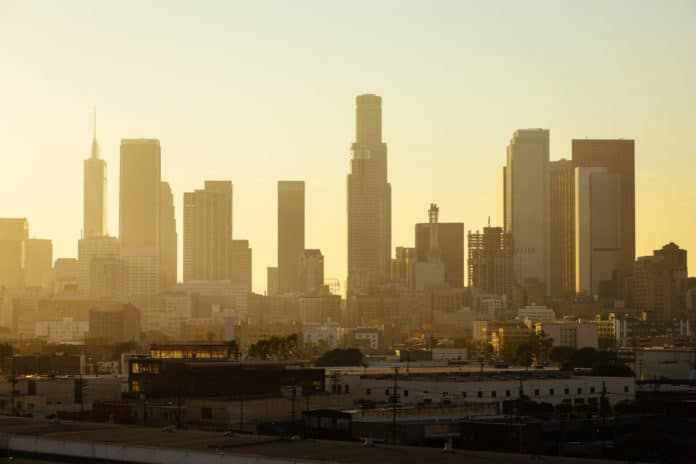In a city iconized for its palm tree-lined streets, car-centric Los Angeles is ironically loathed by locals and tourists alike for its heavy traffic. Thousands of semi-trailer trucks move in and out of the largest container port in North America, dispersing goods to the rest of the country, but at a cost. LA’s sunny skies don’t help either – allowing for carbon dioxide, exhaust and particulate matter (PM) that accumulate, to brew in the air, evident by the thick layer of smog that regularly blocks downtown skyline views.
An air pollution study performed by the University of Southern California using fine particles collected from the 110 Freeway showed evidence that breathing dirty air is linked to Alzheimer’s disease (AD) and other neurodegenerative diseases. While genetics can play a role in the likelihood of Alzheimer’s, research is proving external environmental factors could also be to blame.
What is Air Pollution?
Air pollution is the presence of toxic chemicals or compounds in the air that pose a health risk. According to the US Environmental Protection Agency, with over 1,000 compounds emitted from vehicles, air pollution from mobile sources proves to be a major cause for concern.
“People who live, work or attend school near major roads appear to have an increased incidence and severity of health problems associated with air pollution exposures related to roadway traffic.”
Particulate matter is just one type of air pollution caused by vehicles. PM includes dust, dirt, soot, or smoke, which are large enough to see. Others are less than 2.5 micrometers in diameter, only visible through an electron microscope, thus the most dangerous.
While Los Angeles has implemented policies and created environmental justice initiatives to improve air quality and reduce air pollution, the LA region is still ranked in the top ten as one of the most polluted metropolitan areas in America.
Air Pollution and Alzheimer’s Disease
While the majority of studies link the inhalation of air pollution as a cause for various heart and lung diseases like asthma, chronic obstructive pulmonary disease (COPD), and stroke, more studies are exploring the link between poor air quality and dementia.
Research from the Center for Occupational and Environmental Health at the University of California, Irvine, found that “there is a significant body of epidemiological works unveiling a strong correlation between exposure to particulate matter (PM) and associated air pollutants with accelerated cognitive decline across multiple stages of life, most prominently when exposed at young or old ages.” Evidence that air pollution is a cause of Alzheimer’s Disease is growing.
Breathing Clean Air
You enjoy the abundance of California sunshine, and love that you can get anywhere in your 4-wheel drive, so what is an Angeleno to do with this information? Because sticking to a consistent sleep routine and consuming 64 ounces of water a day isn’t enough, here are a few ways I have adapted to dealing with that dirty, lingering inversion layer, breathing cleaner air and living a healthier life.
- Knowledge is Power: I have an air quality app called BreezoMeter which will give me street-by-street air quality conditions. There are some surprises: leafy Pasadena and the Angeles National Forest have worse air than I do in downtown. And the beach communities which smell great are often not so great for air quality. You can also visit the EPA’s website, Air Now, to see real-time air quality information in your area so you know when to avoid outdoor activities during poor air quality conditions. Here is a good guide to air filters.
- Clean the Air: We spend most of our days indoors working. We keep the windows closed during the day when the particulate pollution is highest, and open them in the evening or early morning. To clean the air, we keep two HEPA air filters running, one in the bedroom, one in the main space, all day every day. Above is what a filter looks like on replacement day — scary monsters.
- Exercising: We can’t live in a bubble. While exercising outdoors, when you are likely breathing the heaviest, avoid busy streets and freeway adjacencies where air pollution is heavily concentrated.
- Driving: While driving on the freeway, keep your windows up and hit the recirculation button so external air and particulate matter don’t get in.
- Want to go a step further? Reduce your carbon footprint by walking to your local grocery store or taking public transportation to work 1-2 days out of the week.



